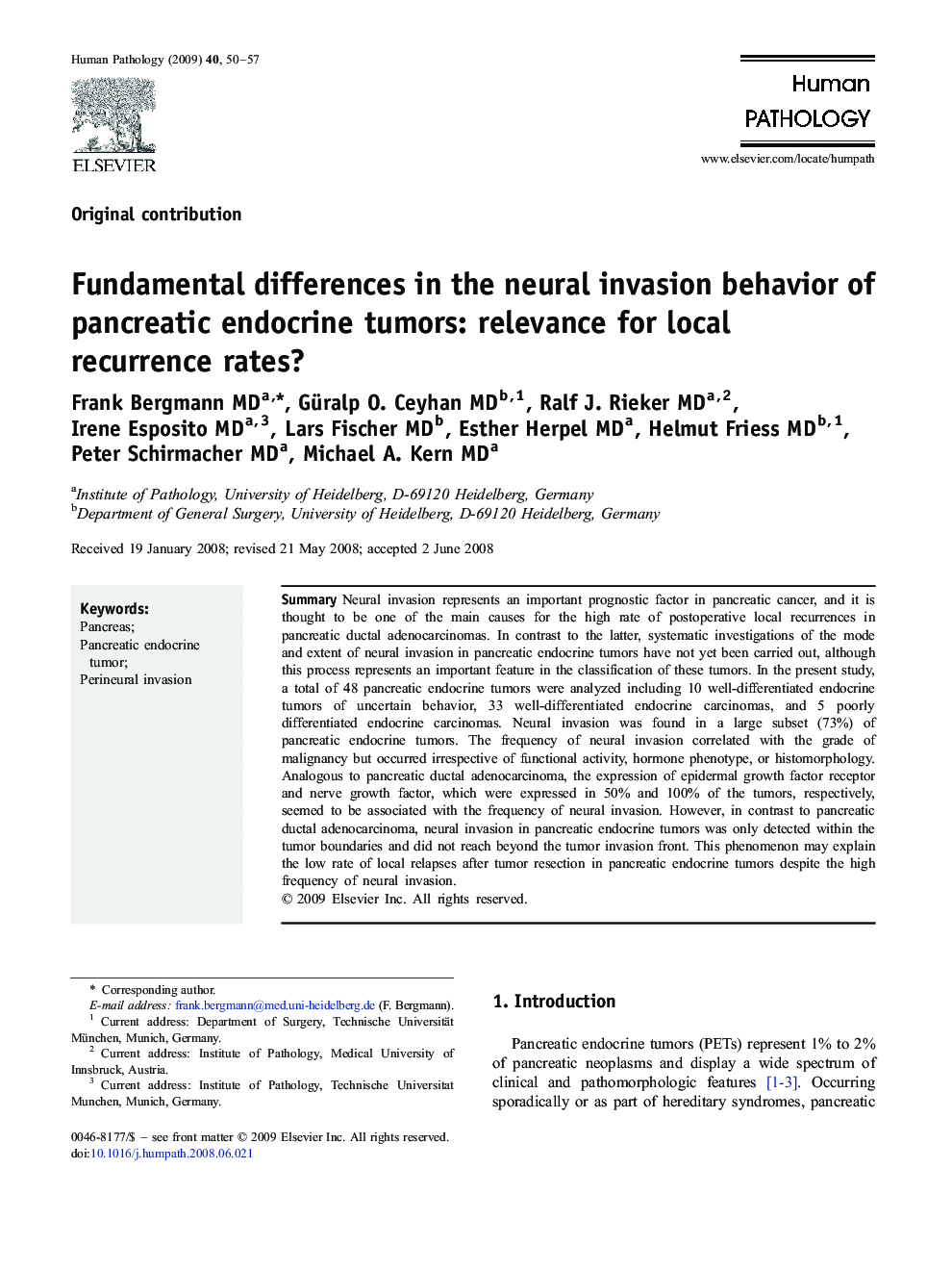| Article ID | Journal | Published Year | Pages | File Type |
|---|---|---|---|---|
| 4134601 | Human Pathology | 2009 | 8 Pages |
SummaryNeural invasion represents an important prognostic factor in pancreatic cancer, and it is thought to be one of the main causes for the high rate of postoperative local recurrences in pancreatic ductal adenocarcinomas. In contrast to the latter, systematic investigations of the mode and extent of neural invasion in pancreatic endocrine tumors have not yet been carried out, although this process represents an important feature in the classification of these tumors. In the present study, a total of 48 pancreatic endocrine tumors were analyzed including 10 well-differentiated endocrine tumors of uncertain behavior, 33 well-differentiated endocrine carcinomas, and 5 poorly differentiated endocrine carcinomas. Neural invasion was found in a large subset (73%) of pancreatic endocrine tumors. The frequency of neural invasion correlated with the grade of malignancy but occurred irrespective of functional activity, hormone phenotype, or histomorphology. Analogous to pancreatic ductal adenocarcinoma, the expression of epidermal growth factor receptor and nerve growth factor, which were expressed in 50% and 100% of the tumors, respectively, seemed to be associated with the frequency of neural invasion. However, in contrast to pancreatic ductal adenocarcinoma, neural invasion in pancreatic endocrine tumors was only detected within the tumor boundaries and did not reach beyond the tumor invasion front. This phenomenon may explain the low rate of local relapses after tumor resection in pancreatic endocrine tumors despite the high frequency of neural invasion.
